
Official Home Page
Nibbana-Mexico Foundation
Vipassana meditation in Mexico

|
|
|
|
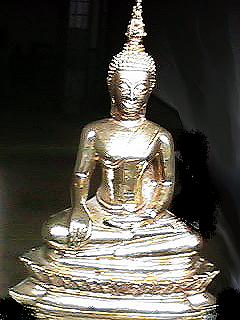
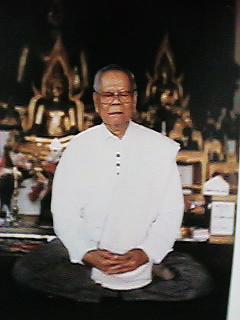
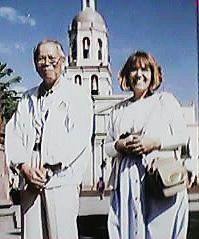
Fundación Nibbäna, Vipassana Meditation Center,
México City;
Calle Cozumel 76, Col. Roma, México 06700, Capital.,
México.
Tel: 52 11 46 41; Fax: 52 11 08 84.
Information in Spanish, English spoken.
Meditations twice a week.
![]()
WILL HELD A MEDITATION RESIDENTIAL RETIREMENT
HERE IN MEXICO CITY, MAYBE YOU CAN COME.
THE PRICE IS VERY LOW, LESS THAN $400.00 US DOLLARS FOR
THE 9 DAYS. INCLUDES MACROBIOTIC
VEGETARIAN FOOD AND LOGGING WITH CLEAN AND CONFORTABLE DOUBLE ROOMS WITH
PRIVATE BATHROOMS, THE PRICE DOESN'T INCLUDES TRANSPORTATION.
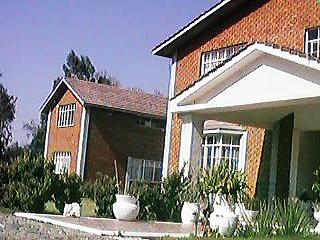

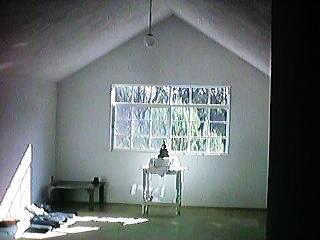

La Villa Santa Elena, a lay monastery, surrounded with big trees, beautiful gardens and singing birds, located 3 hours driving north from México City. It is located in the town of Tequisquiapan, Querétaro, a pretty small town free of pollution.
NUESTRO PRÓXIMO
RETIRO DE MEDITACIÓN DE INTROSPECCIÓN VIPASSANÃ
Fundación Nibbãna
Julio y Noviembre 1999
Tequisquiapan, Qro. México
El Centro Macrobiótico Tao, la Villa Santa Elena y la fundación
Nibbãna te participan su próximo RETIRO DE MEDITACIÓN
DE INTROSPECCIÓN VIPASSANÃ, dirigido por achán Sobin
S. Namto, respetado maestro tailandés de meditación de introspección,
quien actualmente radica en Estados Unidos.
Achán Sobin S. Namto compartirá en México su experiencia con todas aquellas personas que estén preparadas para escuchar y practicar estas enseñanzas.
Achan Sobin S. Namto es el amigo sabio y compasivo que nos guía
a comprender como se lleva a cabo el proceso del conocimiento, mediante
la observación y entendimiento directo de la actividad física
y mental momento a momento.
SI TE INTERESA CONOCERTE, VEN E INVESTIGA POR TÍ MISMO.
Retiro de Entrenamiento Mental de nueve días.
La aportación cubre el hospedaje, la alimentación y los
gastos de
organización.
Es una tradición ofrecer la enseñanza sin costo alguno.
No incluye el transporte.
Se agradecen donativos para el maestro.
Los retiros se llevan a cabo en la Villa Santa Elena, situada en
Tequisquiapan, Qro.
El lugar es tranquilo, hermoso y perfecto para la meditación.
Las habitaciones son dobles con baño privado. La alimentación
es
macrobiótica preparada
en forma natural.
Reserve su lugar con el 25% de inscripción.CUPO LIMITADO
FUNDACIÓN NIBBÃNA
La fundación Nibbãna se establece en México para
cultivar el
entendimiento del desarrollo mental y físico. Promueve la paz
individual y de la comunidad. Crea un espacio para poder investigar
la naturaleza humana.
Informes, reservaciones e inscripciones únicamente
en:
Centro Macrobiótico Tao
Cozumel 76, Col. Roma.
Mexico, D.F., 06700
A espaldas del Palacio de Hierro Durango
Tels. 52 11 46 41 y 52 11 08 84
E-mail: [email protected]
Página en internet:
http://www.geocities.com/Athens/Acropolis/7652/index.html
_________________________________________________________
Vipassana, which means to see things as they really are,
is one of
Buddhism most ancient techniques of meditation.
It was taught in India more than 2500 years ago by the
Buddha.
VIPASSANA MEDITATION IN MÉXICO CITY.
The technique of Vipassana Meditation in México
is taught at one
weekend, nine day, one month, or three month residential
retirements
during which participants learn the basics of the technic,
and practice
sufficiently to experience its beneficial results.
The retirement is held in our Villa Santa Elena, México
(a lay
monastery) three hours driving north from México
City, with 20
confortable double rooms with private bathrooms.
There are no charges for learning the technic.
The teacher retreat expenses are met by donations from
the students
whom are willing to do it.
No instructors involved in its teaching receives any
material
remuneration.
There are charges to cover the cost of food and accommodation.
Also, there are several centers in North America; Asia,
and one center in
México.
Each one maintains its own schedule of one weekend, ten
day, one
month, or three month retirement Vipassana meditation.
After reviewing the Ten precepts of Discipline for the
retirements in
Vipassana Meditation, you may make an application for
a retirement at
the center of your choice.
ACHAN SOBIN S. NAMTO
Achan Sobin S. Namto was born and raised in Laos, Thailand.
He has taught tens of thousands of people in more than
500 courses in
Asia, America and México where also he began to
appoint assistant
teachers to help him to meet the growing demand for courses.
Vipassana meditation centers have been established under
his guidance
in Thailand, United States, and México.
Achan Sobin teaches the technique which represents a tradition
that is
traced back to the Buddha.
The Buddha never taught a sectarian religion; he taught
Dhamma - the
way to liberation- because it has been found to be an
universal technique,
Achan Sobin S. Namto put great emphasis on preserving
the technique
in its original, authentic form.
It is not taught commercially, but instead is offered
freely.
In the same tradition, Achan Sobin's approach is totally
non-sectarian.
For this reason, his teaching has a profound appeal to
people of all
backgrounds, of every religion and no religion, of every
part of the
world.
The Technique
This non-sectarian technique aims for the total eradication
of mental
impurities and the resultant highest knowledge of full
liberation where
the purpose is the healing of the human suffering.
Vipassana is a way of self transformation through self
observation. It
focuses on the deep interconnection between mind and
body, which can
be experienced directly by disciplined attention to the
physical sensations
that form the life of the body, like breathing, walking,
sitting and lying
down, and that continuously interconnect and condition
the life of the
mind.
It is this observation based, self exploratory journey
to the common root
of mind and body that dissolves mental impurity, resulting
in a balanced
mind full of love and compassion.
Through direct experience, the nature of how one grows
or regresses,
how one produces suffering or frees oneself from suffering
is understood.
Life becomes characterized by increased awareness, non
delusion, self-
control and peace.
The Tradition
Since the time of Buddha, Vipassana has been handed down,
to the
present day, by an unbroken chain of Theravada teachers.
Although Indian by descent, the current teacher in this
chain, Achan
Sobin, was born in Laos and raised in an Buddhist temple
in Thailand.
While living there he had the good fortune to learn Vipassana
meditation
from his teachers while he was a monk. After receiving
training from his
teacher for fourteen years, Achan Sobin was send to America
to open a
Buddhist temple and began teaching Vipassana meditation
in 1972.
Since then he has taught tens of thousands of people
of all religions, and
he began to appoint assistant teachers to help him meet
the growing
demand for Vipassana retirements.
THE RETIREMENT AT VILLA SANTA ELENA, MÉXICO, THE
UNIQUE LAY MONASTERY IN LATIN AMERICA.
The technique requires hard, serious work.
There are three steps to the training.
The first step is, for the period of the retirement,
to abstain from killing,
stealing, sexual activity, speaking falsely, and intoxicants.
This simple
code of moral conduct serves to calm the mind, which
otherwise would
be too agitated to perform the task of self observation.
The second step is to develop some mastery over the mind
by learning to
fix one's attention on the natural movement of the stomach
while
breathing in and out.
These first two steps of living a moral life and controlling
the mind are
very necessary and beneficial in themselves; but they
will lead to self-
repression, unless one takes the third step - purifying
the mind of
defilement's by developing insight into one's own nature.
This is
Vipassana: experiencing one's own reality, by the systematic
and
dispassionate observation of the ever changing mind matter
phenomenon manifesting itself as sensation within oneself.
This is the
culmination of the teaching of the Buddha: self purification
by self-
observation.
This can be practiced by one and all. Everyone faces the
problem of
suffering. it is a universal disease which requires a
universal remedy--
not a sectarian one. When one suffers from anger, it
is not a Buddhist
anger, Hindu anger, or Namto anger, or Christian anger.
Anger is anger.
When one become agitated as a result of this anger, this
agitation is not
Christian, or Hindu, or Buddhist. The malady is universal.
The remedy
must also be universal.
By the third step the mind is calmer and more focused,
better able to
undertake the practice of Vipassana meditation itself:
observing
sensations throughout the body, understanding their nature,
and
developing equanimity by learning not to react to them.
The students
learn the meditation of loving kindness or goodwill towards
all, in which
the purity developed during the retirement is shared
with all beings.
The entire practice is actually a mental training.
Just as we use physical exercises to improve our bodily
health, Vipassana
meditation can be used to develop a healthy mind.
Of course, the results come gradually through continued
practice. It is
unrealistic to expect all problems to be solved in ten
days. Within that
time, however, the essentials of Vipassana meditation
can be
learned so that it can be applied in daily life. The
more the technique is
practiced, the greater the freedom from misery, and the
closer the
approach to the ultimate goal of full liberation. Even
ten days can
provide results which are vivid and obviously beneficial
in everyday life.
All sincere people are welcome to join a Vipassana meditation
retirement to see for themselves how the technique works
and to
measure the benefits. Vipassana meditation are even being
conducted in
prisions, with great success and wonderful benefits for
the inmates who
participate. All those who try it will find Vipassana
meditation to be an
invaluable tool with which to achieve and share real
happiness
with others.
VIPASSANA MEDITATION
Everyone seeks peace and harmony, because these are what
we lack in
our lives. From time to time we all experience agitation,
irritation,
disharmony, suffering; and when one suffers from agitation,
one does not
keep this misery limited to oneself. One keeps distributing
it to others as
well. The agitation permeates the atmosphere around the
miserable
person. Everyone who comes into contact with him also
becomes
irritated, agitated. Certainly this is not the proper
way
to live.
One ought to live at peace with oneself, and at peace
with all others.
After all, a human being is a social being. He has to
live in society --to live
and deal with others. How are we to live peacefully?
How are we to
remain harmonious with ourselves, and to maintain
peace and harmony
around us, so that others can also live peacefully and
harmoniously?
This direct experience of one's own reality, this techniques
of self-
observation, is what is called Vipassana meditation.
In the language of India in the time of the Buddha, passana
meant seeing
with open eyes, in the ordinary way;
but Vipassana is observing things as they really are,
not just as they
seem to be. Apparent truth has to be penetrated, until
one reaches the
ultimate truth of the entire mental and physical structure.
When one
experiences this truth, then one learns to stop reacting
blindly, to stop
creating defilements-- and naturally the old defilement's
gradually are
eradicated. One come out of all the misery and experiences
happiness.
Vipassana is such a remedy. No one will object to a code
of living which
respects the peace and harmony of others. No one will
object to
developing control over the mind. No one will object
to developing
insight into one's own reality, by which it is possible
to free the mind of
negativity's.
Vipassana is a universal path.
Observing reality as it is by observing the truth inside
this is knowing
oneself at the actual, experiential level. As one practices,
one keeps
coming out of the misery of defilement's. From the gross,
external,
apparent truth, one penetrates to the ultimate truth
of mind and matter.
Then one transcends that, and experiences a truth which
is beyond mind
and matter, beyond time and space, beyond the conditioned
field of
relativity: the truth of total liberation from all defilement's,
all
impurities, all suffering. Whatever name one gives this
ultimate truth, is
irrelevant; it is the final goal
of everyone.
The above text is based upon a talk given by Achan Sobin
S. Namto in la
Villa Santa Elena, México:
What Vipassana is:
It is a technique that will eradicate
suffering.
It is an art of living that one can
use to make positive contributions to
society.
It is a method of mental purification
which allows one to face life's
tensions and problems in a
calm, balanced way.
Its purpose is never simply to cure physical
disease. However, as a by-
product of mental purification, many psychosomatic diseases
are
eradicated. in fact, Vipassana eliminates the three causes
of all
unhappiness: craving, aversion and ignorance. With continued
practice.
The Vipassana meditation releases the tensions
developed in everyday
life, opening the knots tied by the old habit of reacting
in an unbalanced
way to pleasant and unpleasant situations.
Although Vipassana meditation was developed as a technique
by the
Buddha, its practice is not limited to Buddhists.
There is absolutely no question of conversion. The technique
works on
the simple basis that all human beings share the same
problems and a
technique which can eradicate these problems will have
a universal
application. People from many religious denominations
have
experienced the benefits of Vipassana meditation, and
have found no
conflict with their profession or faith.
What Vipassana is not:
It is not a rite or ritual based on
blind faith.
It is neither an intellectual nor
a philosophical entertainment.
It is not a rest cure, a holiday,
or an opportunity for socializing.
It is not an escape from the trials
and tribulations of everyday life.
MEDITATION AND SELF DISCIPLINE
The process of self purification by introspection is
certainly never easy--
students have to work very hard at it. By their own efforts
students
arrive at their own realizations; no one else can do
this for them. Therefore, the meditation will suit only
those willing to
work seriously and observe the discipline, which is there
for the benefit
and protection of the meditators and is an integral part
of the meditation practice.
Ten days is certainly a very short time in which to penetrate
the deepest
levels of the unconscious mind and learn how to eradicate
the complexes
lying there. Continuity of the practice in seclusion
is the secret of this technique's success.
Rules and regulations have been developed keeping this
practical aspect
in mind. They are not primarily for the benefit of the
teacher or the
retirement management, nor are they negative expressions
of tradition,
orthodoxy or blind faith in some organized religion.
Rather, they are
based on the practical experience of Achan Sobin
S. Namto over the
years and are both scientific and rational. Abiding by
the rules creates a
very conductive atmosphere for meditation; breaking them
pollutes it.
A student will have to stay for the entire period of the
retirement. The
other rules should also be carefully read and considered.
Only those who
feel that they can honestly and scrupulously follow the
discipline should
apply for admission.
Those not prepared to make a determined effort will waste
their time
and, moreover, will disturb others who wish to work seriously.
A
prospective student should also understand that it would
be both
disadvantageous and inadvisable to leave without finishing
the
retirement upon finding the discipline too difficult.
Likewise, it would be most unfortunate if, in spite of
repeated reminders,
a student does not follow the rules and has to be asked
to leave.
THE CODE OF DISCIPLINE
The foundation of the practice is Sila --moral conduct.
Sila provides a
basis for the development of Samadhi --concentration
of mind; and
purification of the mind is achieved through Panna --the
wisdom of
insight.
THE PRECEPTS
All who attend a Vipassana retirement must conscientiously
undertake
the following five precepts for the duration of the retirement:
1. to abstain from killing any living
creature;
2. to abstain from stealing;
3. to abstain from all sexual activity;
4. to abstain from telling lies;
5. to abstain from all intoxicants.
There are three additional precepts which old students
(that is, those
who have completed a retirement with Achan Sobin
S. Namto or one of
is assistant teachers) are expected to follow:
6. to abstain from eating after midday;
7. to abstain from sensual entertainment
and bodily decoration;
8. to abstain from using high or luxurious
beds.
Old students will observe the sixth precept by having
only herb tea at the
5 p.m. break. Achan Sobin S. Namto may excuse a
student from
observing this precept for health reasons. The seventh
and eighth
precept will be observed by all.
ACCEPTANCE OF THE TEACHER AND THE TECHNIQUE
Students must declare themselves willing to comply fully
and for the
duration of the retirement with the teacher's guidance
and instructions;
that is, to observe the discipline and to meditate exactly
as
Achan Sobin S. Namto asks, without ignoring any
part of the
instructions, nor adding anything to them. This acceptance
should be one
of discrimination and understanding, not blind submission.
Only with an
attitude of trust can a student work diligently and thoroughly.
Such
confidence in the teacher and the technique is essential
for success in
meditation.
OTHER TECHNIQUES, RITES, AND FORMS OF WORSHIP
During the retirement it is absolutely essential that
all forms of prayer,
worship, or religious ceremony fasting, burning incense,
counting beads,
reciting mantras, singing and dancing, etc.-- be discontinued.
OTHER MEDITATION TECHNIQUES
All other meditation techniques and healing or spiritual
practices should
also be suspended.
This is not to condemn any other technique or practice,
but to give a fair
trial to the technique of Vipassana in its purity.
Students are strongly advised that deliberately mixing
other techniques
of meditation with Vipassana will impede and even reverse
their
progress.
Despite repeated warnings by Achan Sobin S. Namto,
there have been
cases in the past where students have intentionally mixed
this technique
with a ritual or another practice, and have done themselves
a great
disservice. Any doubts or confusion which may arise should
always be
clarified by meeting with the teacher.
INTERVIEWS WITH ACHAN SOBIN S. NAMTO
Problems or questions regarding the meditation should
be taken only to
Achan Sobin S. Namto for clarification.
Interviews and question times are solely for the purpose
of clarifying
actual practical problems concerned with the technique.
They are not to
be regarded as opportunities to indulge in philosophical
discussions or
intellectual arguments.
The unique nature of Vipassana meditation can only be
appreciated by
putting it into practice and during the retirement students
should
concentrate exclusively on this task.
SILENCE
Silence means silence of body, speech, and mind.
All students must
observe Silence from the beginning of the retirement
until the morning of
the last full day.
Any form of communication with fellow student, whether
by gestures,
sign language, written notes, etc., is prohibited.
Students may, however, speak with Achan Sobin S.
Namto whenever
necessary and they may approach the management with any
problems
related to food, accommodation, health, etc. But even
these
contacts should be kept to a minimum. Students should
cultivate the
feeling that they are working in isolation.
COUPLES
Complete segregation of men and women is to be maintained.
Couples,
married or otherwise, should not contact each other in
any way during
the retirement. The same applies to friends, members
of the same
family, etc.
PHYSICAL CONTACT
It is important that throughout the retirement there
be no physical
contact whatsoever between persons of the same or opposite
sex.
YOGA, TAI CHI AND PHYSICAL EXERCISE
Although yoga, tai chi and other exercises are compatible
with Vipassana
meditation, they should be suspended during the retirement
because
proper secluded facilities are not available at the retirement
site.
Jogging is also not permitted.
Students may do some exercise during rest periods by
walking in the
designated areas.
RELIGIOUS OBJECTS, ROSARIES, CRYSTALS, TALISMANS, ETC.
No such items should be brought to the retirement site.
If brought
inadvertently they should be deposited with the management
for the
duration of the retirement.
INTOXICANTS AND DRUGS
No drugs, alcohol, or other intoxicants should be brought
to the site; this
also applies to tranquilizers, sleeping pills, and all
other sedatives. Those
taking medicines or drugs on a doctor's prescription
should notify the
teacher.
TOBACCO
Smoking, chewing tobacco, and taking snuff are not permitted
at the
retirement.
FOOD OR BEVERAGES
It is not possible to satisfy the special food preferences
and requirements
of all the meditators.
Students are therefore kindly requested to make do with
the simple
Macrobiotic - vegetarian meals provided.
The retirement management endeavors to prepare a balanced,
wholesome Macrobiotic food suitable for meditation. If
any students
have been prescribed a special diet because of ill health,
they should
inform to Achan Sobin S. Namto before the time
of application.
CLOTHING, LOTIONS AND PERFUMES
Dress should be simple, light colors, modest, and comfortable.
Tight, transparent, revealing, or otherwise striking
clothing (such as
shorts, short skirts, tights and leggings, sleeveless
or skimpy tops) should
not be worn, lotions, lipstics and perfumes should not
been used.
Sunbathing and partial nudity are not permitted.
This is important in order to minimize distraction to
others.
LAUNDRY AND BATHING
For retirement less than ten days there are No washing
machines or
dryers available, so students should bring sufficient
clothing. Small items
can be hand washed.
Bathing and laundry may be done only in the break periods
and not
during meditation hours.
LETTERS, PHONE CALLS, CELLULAR CALLS AND VISITORS
Students must remain within the Villa boundaries throughout
the
retirement. They may leave only with the specific consent
of Achan
Sobin S. Namto. No outside communications is allowed
before the
retirement ends. This includes letters, phone calls,
Internet, cellular calls and
visitors.
In case of an emergency, a friend or relative may contact
the management.
MUSIC, RECORDING, CELLULARS, LAP TOP COMPUTERS, READING
AND WRITING
The playing of musical instruments, radios, etc. is not
permitted.
No reading, recording or writing materials should be
brought to the
retirement. Students should not distract themselves by
taking notes. The
restriction on reading and writing is to emphasize the
strictly practical
nature of this mediation.
TAPE RECORDERS AND CAMERAS
These may not be used except with the express permission
of Achan Sobin S. Namto.
FINANCES
According to the tradition of pure Vipassana, retirements
are run solely on a donation basis.
Donations are accepted from students. Such donations
are the only source of funding for retirements in this tradition around
the world.
There is not wealthy foundation or individual sponsoring
them.
Neither the teachers nor the organizers receive any kind
of payment for their service. Thus, the spread of Vipassana is carried
out with purity of purpose, free from any commercialism.
Whether a donation is large or small, it should be given with the wish to help others.
CHARGES TO COVER THE COST OF FOOD AND ACCOMMODATION.
There are charges to cover the cost of food and
accommodation.
SUMMARY
To clarify the spirit behind the discipline and rules,
they may be
summarized as follows:
Take great care that your actions do not disturb anyone.
Take no notice of distractions caused by others.
It may be that a student cannot understand the practical
reasons for one
or several of the above rules.
Rather than allow negativity and doubt to develop, immediate
clarification should be sought from the teacher.
It is only by taking a disciplined approach and by making
maximum
effort that a student can fully grasp the practice and
benefit from it.
The emphasis during the retirement is on work.
A golden rule is to meditate as if one were alone, with
one's mind turned
inward, ignoring any inconveniences and distractions
that one may
encounter.
Finally, students should note that their progress in Vipassana
meditation
depends solely on their own good qualities and personal
development and
on five factors: earnest efforts, confidence, sincerity,
health and wisdom.
THE RETIREMENT TIMETABLE
The following timetable for the retirement has been designed
be
maintain the continuity of practice.
FOR BEST RESULTS STUDENTS ARE ADVISED TO FOLLOW IT AS
CLOSELY AS POSSIBLE.
4:45 a.m. Morning Wake up bell
5:00-6:30 a.m. GROUP MEDITATION IN THE MEDITATION ROOM
7:00-8:00 a.m. Breakfast break
8:00-9:00 a.m. GROUP MEDITATION IN THE MEDITATION ROOM
9:00-11:45 a.m. MEDITATION IN THE MEDITATION ROOM
Lunch break
12 noon-1:30 p.m. Lunch break
2:30-5:45 p.m. GROUP MEDITATION IN THE MEDITATION ROOM
5:00-6:00 p.m. Tea break
6:00-7:00 p.m. GROUP MEDITATION IN THE MEDITATION ROOM
7:00-8:15 p.m. Achan Sobin S. Namto teachings
8:15-9:00 p.m. GROUP MEDITATION IN THE MEDITATION ROOM
9:00-9:30 p.m. Question time in the meditation room
9:30 p.m. Retire to your own room Lights out
You may register for a retirement in Vipassana meditation
by completing a retirement application or obtain further information
from any one of the North American, Mexican or European Centers.
|
May all people come out of their defilement's, their misery. May they enjoy real happiness, real peace, real harmony. May the above information help you to obtain maximum benefit from your meditation retirement. We are happy to have the opportunity to serve, and wish you peace and harmony from you experience of Vipassana meditation. |
WAT BUDDHA WARARAM OF DENVER:
INFORMATION.
Vipassana Dhura Meditation Society
At Wat Buddhawararam of Denver
4801 Julian St.
Denver, CO 80221(303) 480 9509
![]()
Previous email: [email protected]
ACHAN SOBIN S. NAMTO
Achan Sobin S. Namto was born in Thailand in 1931.
He has spent more than 45 years teaching insight meditation, Buddhism and
Abhidhamma. He was a monk for 32 years. For several years he
lived as a wandering forest monk and entered long periods of intensive
solitary practice.
Achan Sobin had many teachers. His
principal teacher was Chao Khun Bhavanabhirama Thera who introduced
him to a meticulous step by step method for developing mindfulness.
At age 24, Achan Sobin became a recognized teacher of Vipassana meditation
and Abhidhamma and taught for many years at Wat Maha Dhatu monastery and
other centers in Thailand, establishing meditation centers in southern
Thailand, where meditators may participate in training courses of various
durations.
In 1972, the Most Venerable Phra Dhammakosacharn,
who later became PhraBiImoldhamma, was the Chief of the First Buddhist
Mission Division of the Buddhist Missionary Department of Thailand,
with the approval of the Thai Sangha Council selected Achan Sobin
and other four monks to establish the first Thai Temple in the United States,
in North Hollywood, California. Maha Sobin was appointed the first
Abbot of this Temple. The Thai Sangha, sensing the growing interest
in Buddhism and meditation in America, confirmed his appointment as a highly
competent monk in both knowledge and ability to effectively represent Buddha
Dhamma in America .
In 1976, Achan Sobin founded the Thai temple,
Wat Buddha Wararam of Denver, Colorado where people could practice Vipassana
meditation.
In 1980, Achan Sobin decided to disrobe as a Thai Buddhist monk to become more familiar with American culture and to assist with his meditation teachings in the West. In 1986, Achan Sobin also established the Vipassana Dhura Meditation Society in San Bernardino, one hour east of Los Angeles, as a retreat center to practice Vipassana meditation. In 1993, Achan Sobin founded the Nibbana Foundation in Mexico City, Mexico to further train teachers in Vipassana meditation, continue the practice, and to translate the teachings into the Spanish language.
In 1990 he was awarded a certificate of appreciation from the Major of Los Angeles. His other honors include a Dhammacakka award from the King of Thailand in 1995, which recognizes individuals who have made outstanding contributions towards the spreading of Buddhist Dhamma abroad. In 1997, a recognition for his work from the Mahachulalongkorn University of Bangkok.
Achan’s close students describe him as the compassionate and wise Dhamma friend who shares knowledge with them.
Achan Sobin currently resides and teaches
at the Vipassana Dhura Meditation Society in Denver, Colorado, but travels
across the world where he hopes to contribute his skills and energies towards
the further development of Insight meditation.
Página auspiciada por 
INFORMES SOBRE LOS TALLERES DE ARTE FLORAL
en la ciudad de Puebla, Pue. México

¿Ya tienes tu tarjeta de Donación Voluntaria de Organos y Tejidos?
Pide tu tarjeta de Donador Voluntario a AMPRAC®

BUSCADORES EN ESPAÑOL
Página actualizada el 1° de enero de 1999 
Página creada por el Ingeniero Rene Schwebel Ransenberg
Co fundador activo de AMPRAC®
Actualizada constantemente a partir del 10 de mayo de 1998. México, Capital.
Copyright © 1998. All rights reserved ®